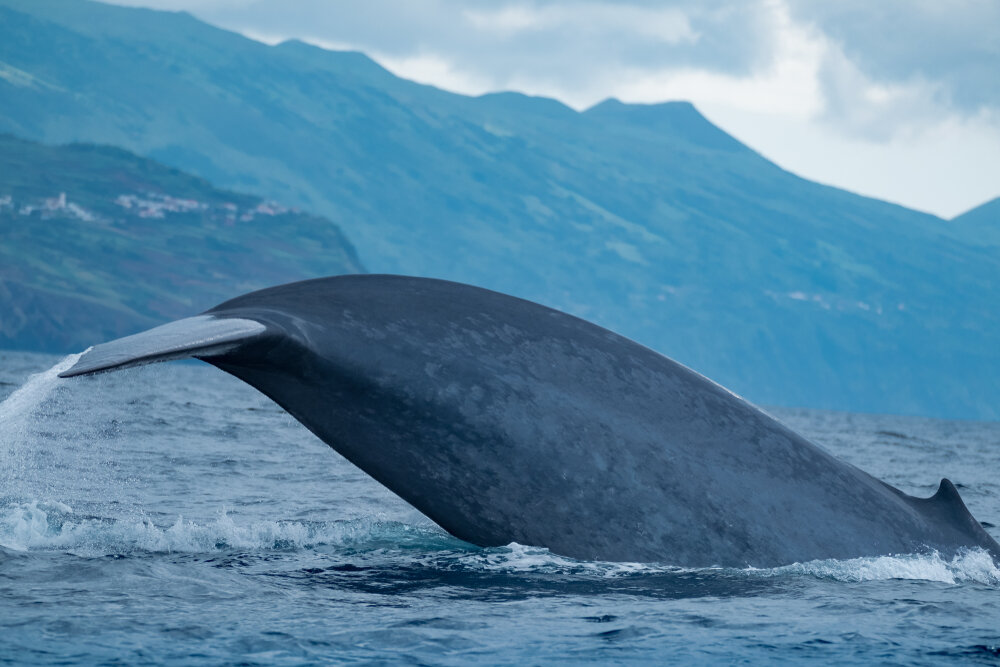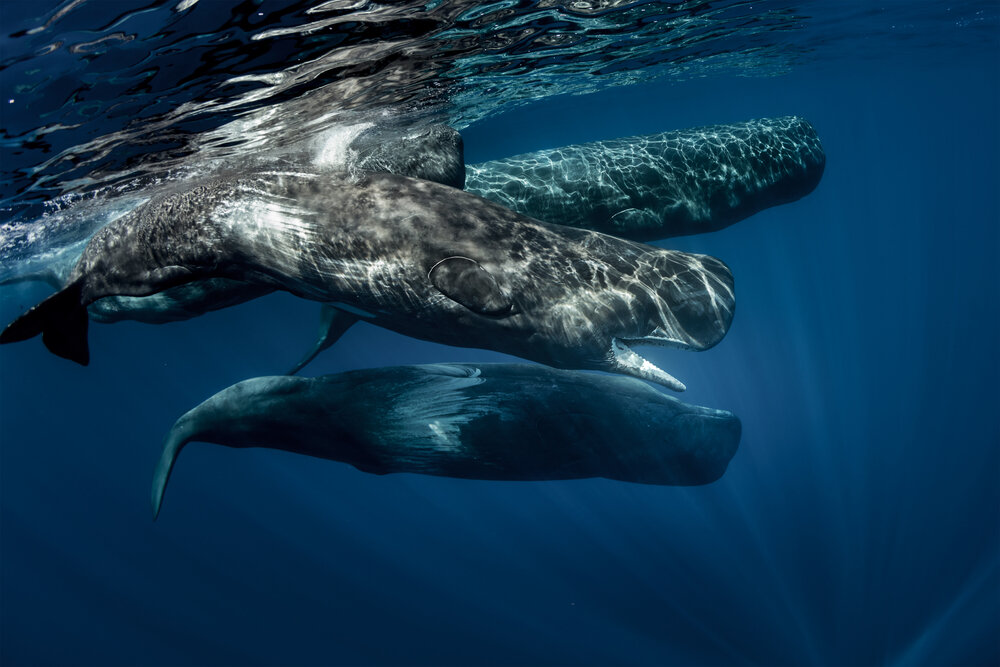
Best Whale Watching in the World:
Where to Go + What to See

Always wanted to see whales in their natural habitat? Got a few more species of whale to tick off your bucket list? Don’t waste your time travelling to places where whales are rarely seen or worse, are exploited for tourism. Experience whale watching the right way! Discover the best whale watching locations anywhere in the world.
Best Whale Watching Destinations in the World
We’ve scoured the globe to find you the very best whale watching experiences. Whether you’re after a glimpse of the mighty blue whale, or the rarely seen fin whale, this ultimate guide will point you in the right direction.
Featured: Xplore Our Planet’s Top Whale Watching Pick!
Where to Go Whale Watching? Baja California, Mexico
When is the Whale Watching Season?
Year-round
Why is this one of the best watching locations in the world?
A rare year-round destination, the nutrient-rich waters of the Sea of Cortez make for a whale paradise. Gray whales travel here to mate, with other species migrating through the waters. It’s also a fantastic place to see whale sharks.
Which whales could you see?
Gray whales, sperm whales, blue whales, humpback whales, fin whales, minke whales, Bryde's whales, killer whales
Where to Go Whale Watching? Hawaii
When is the Whale Watching Season?
December to May
Why is this one of the best watching locations in the world?
The warm and sheltered waters of Hawaii prove popular with humpback whales you travel here to mate and raise young. They stay in the waters for months while their young grow strong enough to head to rougher seas.
Which whales could you see?
Humpback
Where to Go Whale Watching? Sri Lanka
When is the Whale Watching Season?
November to April (South) June to October (East)
Why is this one of the best watching locations in the world?
Due to deep-sea trenches located just offshore, Sri Lanka offers bountiful feeding for whales in accessible coastal waters. The east coast of Sri Lanka (Trincomalee) may just be the best whale watching location in the world for blue whales.
Which whales could you see?
Sperm whales, blue whales
Where to Go Whale Watching? Monterey Bay, California
When is the Whale Watching Season?
Year-round (summer for most sightings)
Why is this one of the best watching locations in the world?
World-famous hunting grounds for a variety of marine species including mammals. Famed for massive congregations of Cetacea, trips at any time of year promise great prospects for whale watching.
Which whales could you see?
Blue whale, fin whale, killer whale, gray whale humpback whale
Featured: A Must-Visit for Travellers!
Where to Go Whale Watching? Vancouver Island, Canada
When is the Whale Watching Season?
May to October
Why is this one of the best watching locations in the world?
Home to resident killer whales, Vancouver Island is one of the best whale watching locations in the world for orca sightings. It’s also the migratory path of gray and humpback whales, which draws in larger transient killer whales, too. The scenery around Vancouver is stunning, and well worth a visit in its own right.
Which whales could you see?
Gray whales, killer whales, humpback whales
Where to Go Whale Watching? Iceland
When is the Whale Watching Season?
April to October
Why is this one of the best watching locations in the world?
While whales visit Iceland year-round, peak season sees it become one of the best whale watching locations in the world. Tours operate both from the west and northern coasts. Rich feeding grounds and undisturbed habitat attract thousands of whales.
Which whales could you see?
Killer whale, blue whale, fin whale, humpback whale, minke whale.
Where to Go Whale Watching? Costa Rica
When is the Whale Watching Season?
July to March
Why is this one of the best watching locations in the world?
A convergence point of three separate humpback whale populations, these animals visit in high numbers. Populations rarely overlap in their migrations, but this does mean there is often a wealth of whales to see.
Which whales could you see?
Humpback whale
Where to Go Whale Watching? Dominica
When is the Whale Watching Season?
November to March
Why is this one of the best watching locations in the world?
Sheer drop trenches just off the coast create the perfect habitats for deep-diving sperm whales to feed close to shore. Easy to spot resting near the surface, sperm whales are here year-round, but more numerous in peak season. The best whale watching in the world for sperm whales.
Which whales could you see?
Sperm whale
Where to Go Whale Watching? Alaska
When is the Whale Watching Season?
April to August
Why is this one of the best watching locations in the world?
The waters of Alaska are prime feeding grounds for whales, and well-known for the famous humpback whale ‘bubble netting’ technique. You’ve also got a chance to see some rare whales like Beluga here if you pick the right tour.
Which whales could you see?
Killer whales, gray whales, blue whales, humpback whales, minke whales.
Where to Go Whale Watching? Azores
When is the Whale Watching Season?
April to October
Why is this one of the best watching locations in the world?
A stop off point for migratory whales travelling across the Atlantic, the Azores plays host to numerous rare whales during the summer months. It’s also a year-round home to resident sperm whales.
Which whales could you see?
Sperm whale, blue whale, fin whale, Sei whale, humpback whale, killer whale.

How to Make Sure You Have the Best Whale Watching Trip Possible
Even the best whale watching in the world can be ruined by unforeseen circumstances or a lack of preparedness. Here are our top tips for making the most of the world’s best whale watching destinations:
Always Travel During Peak Times
Just because there is an abundance of whales in one location during a specific month, doesn’t mean they’ll be there the next. Travelling outside of peak dates is a sure-fire way to be disappointed.
Be Prepared for a Rough Ride
The best whale watching in the world is often done out in the open sea, sometimes on small ribs. The water can be rough. Prepare for seasickness and take medication if needed.
Make Sure You Pack Extra Layers
Even in very hot locations, it can get cold fast out at sea. Harsh winds and sprays can bring the temperature way down. To get the most out of your whale watching, wrap up warm and prepare for that ocean chill.
Manage Your Whale Watching Expectations
Reality is rarely like the dream and while whales are usually spotted a short distance away, which is absolutely breathtaking, don’t expect to get so close you can touch the animals.
Book Multiple Whale Watching Trips
Despite their size, whales are elusive animals. Bad weather can also make whales hard to spot. Booking multiple whale watching excursions gives you a better chance of a very memorable encounter.
Ask Your Guides Questions If Possible
If you’re on a long trip, you’ll likely have plenty of time to talk to guides. They’ll usually have amazing stories and a wealth of knowledge that can enrich your whale watching.
Be Prepared to Pay Extra
You’ll likely find many tour operators offering whale watching at these locations. While competitively priced options are fine on a budget, if you can afford to, splashing out may get you more time or better guides.
Don’t Forget to Put the Camera Down
Photographs are great, but it’s easy to miss amazing moments with your own eyes when staring down a lens. Take photos, but also take time to experience whale watching yourself.
Bonus Tip: Take Submersible Video Equipment
Very little of the whales you’ll see is actually visible from the surface. Their bulk is beneath the water. If you’re lucky enough to see a whale up close, equipment like GoPro’s with buoyancy attachments and pole extenders can allow you to record amazing footage of whales from the safety of your boat.
How to Take Part in Responsible Whale Watching
At Xplore Our Planet, we love whale watching, but we love whales even more. No whale watching experience should come at the cost of whale welfare or wellbeing. Animal exploitation for the sake of an encounter should always be avoided without exception. If you’re excited about visiting the best whale watching locations in the world, we think it’s safe to say you feel the same way. However, we also understand that it’s difficult to know where the line is, and what you can do to avoid accidentally being involved in such activities. But what can you actually do?
Check Reviews
Simple but effective. Look at reviews and search for red flags. It may be obvious, such as people saying tour operator behaviour was bad, or it may be something more subtle, like photos of people touching animals when they shouldn’t or stories of tour operators taking extreme lengths, like moving boats in the path of whales, to get better views.
Look at Accreditations
Whale watching is a business and with all industries you’ll find two types of businesses: passion projects and those driven purely by profit. Even passion projects need to make money, but these whale watching businesses will likely have other affiliations to fuel their passion, like links to charities, research projects and conservation efforts. Look for tour operators supporting whales.
Talk To Your Guides
While you must go during peak season, there are peaks and dips during these times, too. Ask tour operators about the quietest times and book then if possible. Fewer whale watching boats on the water means fewer disturbances to whale behaviour. If that’s not possible, when on your trip, discuss with guides the possibility of searching in waters occupied by fewer boats.
Consider Craft
You’d be forgiven for thinking that the greatest disturbance to whales came from big boats like ferries, and you’d be right, sort of. Actually it’s all about loud motors crashing around in the water. If you have the choice, going for quieter modes of transport like sailing boats, electric boats, man-powered craft like kayaks, or boats designed to limit noise will reduce your impact.












